When IBM introduced its first PC in August 1981, it created a new standard for desktop computers in the business world. However, IBM didn’t address portability, which created an opening for Compaq and Toshiba to enter the PC market. This is Compaq’s story.
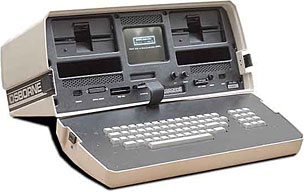 Even before IBM entered the personal computer market, there were “portable” computers – about the size of a suitcase, very heavy, but at least they were transportable. The first was the Osborne 1 (1981), built around a 4 MHz Zilog Z80 processor, two floppy drives, and a 5″ CRT display. It ran CP/M 2.2, which was the standard in the business world, and retailed for $1,800 with $1,500 worth of bundled software – Wordstar, SuperCalc, dBase II, Microsoft MBasic, Digital Research CBASIC2, three ledger program from PeachTree Software, and a couple games.
Even before IBM entered the personal computer market, there were “portable” computers – about the size of a suitcase, very heavy, but at least they were transportable. The first was the Osborne 1 (1981), built around a 4 MHz Zilog Z80 processor, two floppy drives, and a 5″ CRT display. It ran CP/M 2.2, which was the standard in the business world, and retailed for $1,800 with $1,500 worth of bundled software – Wordstar, SuperCalc, dBase II, Microsoft MBasic, Digital Research CBASIC2, three ledger program from PeachTree Software, and a couple games.
The Osborne 1 was a runaway success, selling 11,000 units in its first 8 months on the market and peaking at 10,000 units per month. All you needed to use the 24.5 lb. Osborne in the field was a strong arm, a sturdy work surface, and an AC outlet. The serial port accommodated a 300 bps or 1200 bps external modem.
Competitors soon arose, including the metal-clad Kaypro II (1981) with a 9″ display – much larger than the original Osborne 1 – and there was even a hard drive version.
Compaq Portables
The Luggables
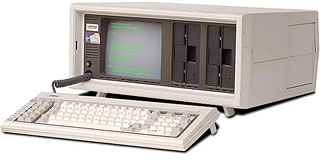 It was against this backdrop that Compaq entered the market in 1983. The Compaq Portable was the first transportable IBM compatible, weighing in at 28 lb. with its 9″ CGA display, two floppy drives, and expansion slots. Its BIOS had been reverse engineered, and it was compatible with almost all IBM PC software.
It was against this backdrop that Compaq entered the market in 1983. The Compaq Portable was the first transportable IBM compatible, weighing in at 28 lb. with its 9″ CGA display, two floppy drives, and expansion slots. Its BIOS had been reverse engineered, and it was compatible with almost all IBM PC software.
The Portable shipped with Compaq DOS 1.13, which was essentially the same as IBM PC-DOS 1.1.
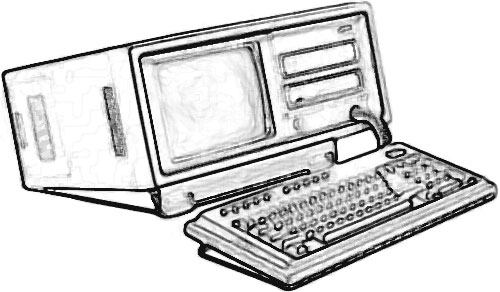 Compaq refreshed its design with the Portable II, an 80286-based AT class machine running at 6 or 8 MHz. There were four ISA expansion slots – two 8-bit and two 16-bit slots (one 8-bit and one 16-bit slot were already in use when you bought the computer). The new model weighed only 23.6 lb., almost 5 pounds lighter than the original Portable.
Compaq refreshed its design with the Portable II, an 80286-based AT class machine running at 6 or 8 MHz. There were four ISA expansion slots – two 8-bit and two 16-bit slots (one 8-bit and one 16-bit slot were already in use when you bought the computer). The new model weighed only 23.6 lb., almost 5 pounds lighter than the original Portable.
The Portable II shipped with MS-DOS 3.1 and supported up to 640 KB on its system board.
The Lunchboxes
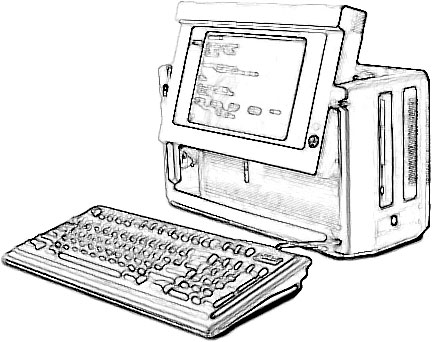 As flat panel display technology marched forward, Compaq was able to develop a much smaller, lighter computer. The first of these was the 1987 Portable III, which has a 640 x 400 resolution amber gas-plasma display in a case that resembled a lunch box more than anything else. It was still no lightweight, tipping the scale at 20 lb.
As flat panel display technology marched forward, Compaq was able to develop a much smaller, lighter computer. The first of these was the 1987 Portable III, which has a 640 x 400 resolution amber gas-plasma display in a case that resembled a lunch box more than anything else. It was still no lightweight, tipping the scale at 20 lb.
The Portable III originally shipped with a 12 MHz 80286 and was later available with a 16 MHz 80386 CPU. There was even room inside the computer for two 16-bit ISA expansion slots.
The Portable 386 and Portable 486 had similar designs.
Compaq Laptops
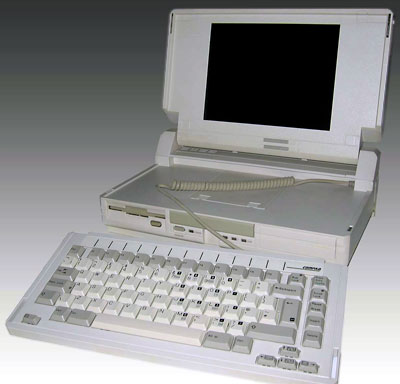 Compaq SLT
Compaq SLT
From luggables to lunchboxes to laptops, Compaq finally entered the notebook market in 1988 with the Compaq SLT/286 – and what a laptop it was! It was the first notebook with a VGA (640 x 480 pixel) display, and it had a much smaller footprint than competing models at just 8.5″ deep.
Rooted in it history of making portable computers for desktop use, the SLT includes a detachable keyboard, part of what made this a 14 lb. machine. The 80C286 CPU was clocked at 12 MHz, and the computer could run for three hours from a fully charged battery.
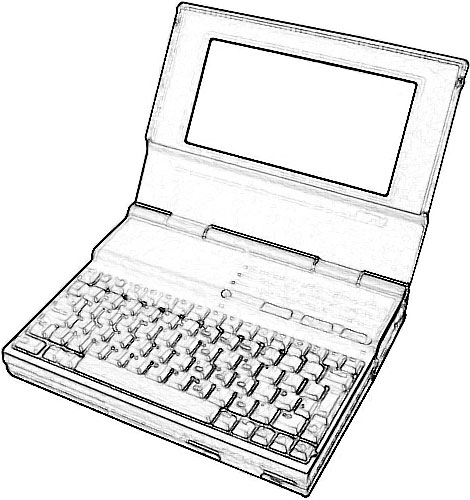 Compaq LTE
Compaq LTE
Compaq’s LTE notebooks (1989) were far more conventional designs, initially available with a 9.54 MHz 8086 CPU or a 12 MHz 80C286. 640 MB of memory was standard, and the computer weighed just 6.7 lb. – under half as much as the SLT!
One compromise compared with the SLT was the use of 640 x 200 pixel CGA graphics instead of the newer 640 x 480 VGA standard on the .
The LTE series continued for years, adding 80386, 80486, and Pentium versions. The 486 version was the first to include a trackball – on the lid to the right of the display.
Further Reading
- Compaq Portable SLT/286, Center for Computing History
Keywords: #compaq #compaqportable #compaqslt #compaqlte
Short link: http://goo.gl/hbwTBQ

